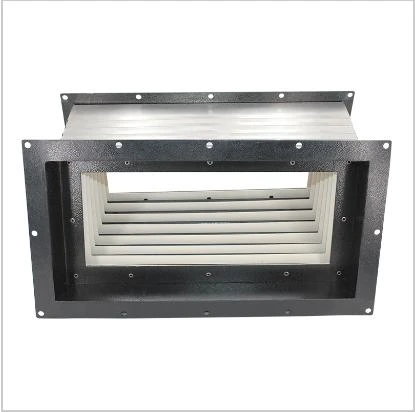what is a synchronous belt
What is a Synchronous Belt?
A synchronous belt, often referred to as a timing belt, is a crucial component used in various mechanical systems, primarily for power transmission in engines and machinery. Unlike traditional V-belts, which rely on friction to transmit power, synchronous belts operate using a series of teeth that mesh with corresponding grooves on pulleys. This design ensures a precise and synchronized movement, making them highly effective for applications where timing is critical.
Structure of a Synchronous Belt
The construction of a synchronous belt typically involves a reinforced rubber core, which provides flexibility and strength. This core is embedded with evenly spaced teeth, engineered to fit snugly inside grooves of the mating pulley. The teeth prevent slippage, allowing the belt to maintain synchrony with the driven components. Materials used for the belt vary, including polyurethane, neoprene, and other composite materials, depending on the required durability and performance characteristics.
How Synchronous Belts Work
Synchronous belts function by engaging with pulleys that have teeth aligned with those on the belt. As the motor or engine turns one pulley, the belt moves in a linear path, engaging the teeth of the next pulley. This mechanism ensures that the rotation occurs in a set ratio, allowing for precise timing and coordination of various components in a machine. For instance, in an internal combustion engine, the synchronous belt maintains the correct alignment between the crankshaft and camshaft, ensuring that valve timing aligns perfectly with the piston movement.
Applications of Synchronous Belts
Synchronous belts are utilized in a wide array of applications, spanning automotive, industrial machinery, and consumer products. In automotive applications, they are essential components in engines, responsible for keeping the crankshaft and camshaft in synchrony. This synchronization is vital for the proper operation of an engine, preventing potential damage from misplaced timing.
In industrial environments, synchronous belts drive conveyor systems, robotic arms, and other machinery that require a fixed relationship between speed and position. In the consumer product space, they can be found in printers and other devices that rely on accurate movement for operational efficiency.
what is a synchronous belt

Advantages of Synchronous Belts
One of the primary advantages of synchronous belts is their ability to maintain consistent timing, which significantly reduces the risks of slippage associated with traditional belts. This reliability translates into enhanced performance, improved energy efficiency, and reduced maintenance requirements. In applications where precision is necessary, such as CNC machining or in robotics, synchronous belts offer the necessary accuracy in motion control.
Another advantage is their quieter operation compared to chain drives or V-belts, making them ideal for environments where noise reduction is essential. The smooth engagement of the teeth minimizes vibration and noise pollution, contributing to a more pleasant operational environment.
Considerations and Limitations
While synchronous belts have numerous benefits, they do have limitations. They require proper alignment to ensure optimal performance and prevent premature wear. Any misalignment can lead to increased stress on the belt and potentially result in failure. Additionally, synchronous belts are sensitive to temperature extremes and certain chemicals, which can degrade the material and shorten their lifespan.
Routine inspections and maintenance are critical to ensuring prolonged life and performance. Regularly checking tension and alignment can prevent issues before they lead to more significant problems.
Conclusion
In conclusion, synchronous belts are vital components in a variety of mechanical systems, providing reliable and precise power transmission. Their unique design and construction make them essential in applications where timing and synchronization are paramount. As technology evolves, the engineering of synchronous belts continues to improve, leading to even greater efficiencies and capabilities in modern machines. Whether in automotive engines or industrial machinery, the importance of synchronous belts cannot be overstated, making them indispensable in the world of mechanization.








